고양이에게는 9개의 목숨이 있다는 말을 들어보셨을 것입니다. 글쎄요, 그게 사실일 수도 있지만 한 가지 확실한 것은 고양이가 적절한 보살핌을 받으면 길고 건강한 삶을 살 수 있다는 것입니다. 고양이를 돌볼 때 고려해야 할 사항이 많이 있으며 다음 섹션에서 모두 다룰 것입니다.

실제로 고양이를 키우기 전에 어떤 종류의 고양이를 원하는지 파악하세요:새끼 고양이 또는 다 자란 고양이, 롱헤어 또는 숏헤어; 순종 또는 골목 고양이; 남성 또는 여성; 줄무늬, 패치 또는 단색.
고양이의 특정 크기, 나이, 성별, 품종 또는 외모에 마음이 끌린다면 고양이를 찾기 전에 약간의 추가 조사를 하십시오. 당신이 좋아하는 외모가 당신의 라이프스타일과 어울리지 않는다는 사실에 놀랄 수도 있습니다. 예를 들어, 당신이 조용한 집을 좋아한다면 샴 고양이는 당신에게 고양이가 아닐 수 있습니다. 그들은 악명 높은 "말하는 사람"입니다. 마찬가지로, 페르시안은 보기에 아름답지만 거의 매일 몸단장을 하는 데 전념하지 않는 한(또는 매주 전문가에게 비용을 지불해야 하는 경우) 멋진 숏헤어 고양이가 더 나은 생각일 수 있습니다. 여행을 많이 다니시나요? 그렇다면 적어도 8개월 이상 된 더 성숙한 고양이가 필요합니다. 고양이 두 마리는 당신이 없는 동안 서로를 지킬 수 있도록 하는 것이 좋습니다.
모두가 고양이를 좋아합니다. 그들은 귀엽고 재미있고 꼭 껴안고 있습니다. 의심할 여지가 없습니다. 그러나 그들이 "아기"라고 실수하지 마십시오. 새끼 고양이가 어미에게서 떨어져 집에서 살 준비가 되면 열 살짜리 아이처럼 걷고, 뛰고, 뛰고, 기어오를 수 있습니다. 뿐만 아니라, 오늘 새끼 고양이를 키우면 단 몇 달 만에 다 자란 고양이를 갖게 됩니다. 평균 수명은 12년에서 15년입니다.
새끼 고양이를 키울 시간, 환경, 에너지가 있다면 꼭 해보세요. 정말 멋진 경험입니다. 새끼 고양이는 유지 관리가 필요하다는 것을 기억하십시오. 그들은 많은 관심을 요구합니다. 그들은 추가 주사, 구충, 중성화 또는 중성화로 구성된 일상적인 수의 진료가 필요합니다. 대부분의 어린 새끼 고양이는 다정하고 수동적으로 시작하지만 그런 상태를 유지하려면 약간의 사회화와 훈련이 필요합니다. 그리고 여전히, 당신은 그들이 자랄 때까지 그들의 성인 성격이 어떨지 알지 못할 것입니다.
마지막으로, 아주 어린 아이들과 아주 어린 새끼 고양이는 일반적으로 잘 섞이지 않습니다. 유아와 10주 된 새끼 고양이가 "함께 자랄" 수 있다고 생각하는 것은 좋지만 실제로는 그런 일이 일어나지 않습니다. 6개월 안에 아이가 가지고 다닐 수 있는 그 작은 털뭉치는 10파운드가 넘는 성인 고양이가 될 것이며, 세 살배기는...세 살 반이 될 것입니다!
확실히 이 미국에서는 고양이가 부족할 위험이 없습니다. 돌아다닐 고양이는 많고 그 다음도 있습니다. 미국 대부분의 지역에서는 해가 지면 현관문을 열면 아침 식사를 마치기도 전에 고양이가 들어올 것입니다.
사실, 주위에 고양이의 수는 당신을 다소 곤경에 빠뜨립니다. 올바른 것을 어떻게 선택합니까? 건강할까요? 숨겨진 건강 또는 행동 문제는 어떻습니까? 집에서 일이 잘 풀리지 않으면 고양이는 어떻게 됩니까?
고양이를 키우는 것은 잔디 깎는 기계나 헤어드라이어를 얻는 것과는 다릅니다. 그들은 보증과 함께 오지 않습니다. 고양이마다 고양이마다 고유한 기쁨과 문제가 있습니다. 그래도 고양이의 출처는 결정을 내리는 데 도움이 됩니다. 출처는 고양이가 결코 아프지 않을 것이라고 약속할 수는 없지만 고양이가 건강을 유지할 수 있는 최상의 기회를 제공하기 위한 조치를 취할 수 있습니다. 나에게 맞는 고양이를 찾을 수 있는 좋은 출처는 다음과 같습니다.
친구와 이웃 당신이 아는 누군가에게 집이 필요한 고양이가 있을 가능성이 있습니다. 많은 경우 이웃이나 친구에게서 고양이를 데려가는 것이 모든 사람에게 가장 효과적입니다. 특히 이웃의 고양이가 낳은 고양이나 알레르기가 있는 친구의 가족 애완동물인 경우에는 더욱 그렇습니다. 이 출처와의 개인적인 관계는 일반적으로이 특정 고양이에 대한 직접적인 이야기도 얻을 수 있음을 의미합니다. 그러나 친구나 이웃에게서 고양이를 데려오는 것에 대한 몇 가지 경고:보호소나 사육사에서 온 고양이처럼 고양이가 광범위한 수의학적 보살핌을 받을 것으로 기대하지 말고 사업과 우정을 혼합하는 것에 주의하십시오.
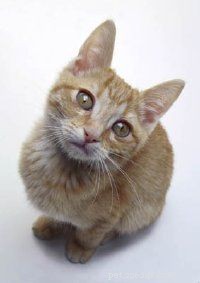
동물 보호소. 매년 수백만 마리의 집 없는 고양이가 동물 보호소에서 안락사됩니다. 보호소에서 입양하는 것은 생명을 구하고 다른 고양이를 위한 공간을 마련하며 저렴한 주사와 중성화 수술로 애완동물을 구할 수 있는 저렴한 방법입니다. 지원서와 인터뷰를 진행할 준비를 하십시오. 그 중 일부는 너무 개인적이고 성급하게 보일 수 있습니다. 그것을 개인적으로 받아들이지 마십시오. 그들에게는 그럴만한 이유가 있습니다. 또한 입양 가능한 반려동물의 시설 및 상태를 확인하시기 바랍니다. 동물들이 가까이서 생활하기 때문에 질병, 벌레, 벼룩이 문제가 될 수 있습니다. Pet Finders(www.petfinder.org)는 지역 보호소에서 입양할 수 있는 고양이 데이터베이스를 유지 관리합니다.
사육자. 순종 고양이를 원한다면 이것이 방법입니다. 훌륭한 육종가는 일반적으로 고양이와 특히 고양이 품종에 대해 매우 잘 알고 있으며 고양이를 누구에게 판매할 것인지 주의합니다. "거래" 순종과 "지하 육종가"(엄격히 이익을 위해 번식하는 사람들)를 조심하십시오. 평판 좋은 육종가는 고품질 동물을 유지하는 데 관심이 있고 세심한 기록을 유지하며 일반적으로 번식하는 암컷 한 마리당 1년에 1-2개의 새끼를 낳습니다. 고양이 애호가 협회(www.cfa.org)와 같은 전국 품종 협회에 사육사 추천을 요청하십시오.
길고양이. 때로는 올바른 고양이를 찾는 것에 대해 걱정할 필요조차 없습니다. 올바른 고양이가 당신을 찾습니다. 많은 사람들이 이것이 최고의 고양이라고 맹세합니다. 입양 인터뷰나 수수료가 없으며 길 잃은 사람의 생명을 구하고 있을 가능성이 큽니다. 반면에, 당신은 주사, 구충, 중성화 등의 비용을 부담해야 합니다. 많은 길 잃은 사람들은 즉시 나타나지 않고 치료 비용이 많이 들 수 있는 다른 건강 문제를 가지고 있습니다. 때때로 지역 인도 사회에서 초기 수의사 치료를 돕거나 지역 동물 병원에서 새끼 고양이 치료에 대해 할인된 요금을 제공할 수 있지만 그것에 의존하지 마십시오.
고양이를 선택할 때 내려야 할 또 다른 중요한 결정은 실내 고양이를 키울 것인지 야외 고양이를 키울 것인지입니다. 다음 섹션에서 각 결정의 결과에 대해 알아보세요.
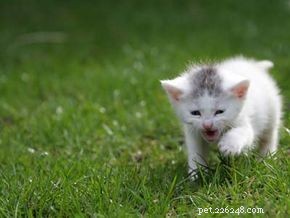
문 너머에 있고 싶어하는 고양이의 울음만큼 불쌍한 것은 없을 것입니다. 그것이 현관일 때, 우리 중 많은 사람들은 고양이가 야외로 나가지 않는 한 진정으로 행복하지 않을 것이라는 의미로 받아들입니다. 그러나 다시 말하지만, 대부분의 고양이는 안으로 들어오고 싶을 때(또는 어떤 문으로든 들어가고 싶을 때) 같은 종류의 라켓을 만듭니다. 고양이는 정말 밖에 나가고 싶어할까? 그들이 필요합니까? 그리고 두 질문에 대한 대답이 "예"일지라도 그것이 정말로 그들에게 최선의 이익입니까?
고양이도 개처럼 외출을 해야 하나요?
강아지를 산책시키는 주된 이유는 배설이며 그 다음은 운동입니다. 가장 작은 개만이 실내에서 충분히 달릴 수 있습니다. 개는 무리 사냥꾼입니다. 즉, 채석장을 지칠 때까지 협력하기 위해 협력합니다. 그것은 하루 종일 걸릴 수 있습니다. 즉, 개는 타고... 달리고... 달리는 본능이 있습니다. 그런 종류의 작업에는 많은 열린 공간이 필요합니다. 반면에 고양이는 "매복 사냥꾼"입니다. 그들은 매우 빠른 실행의 비교적 짧은 버스트에 의존합니다. 적당한 길이의 복도는 충분한 공간을 제공합니다. 쓰레기를 묻고 싶은 본능(고양이가 쓰레기통을 사용하는 이유)과 결합되어 고양이를 야외로 데려가야 할 긴급한 이유가 없습니다.
물론 신선한 공기와 햇빛은 사람이든 고양이든 누구에게나 좋습니다. 그러나 고양이의 야외 생활이 정말 더 "자연스럽습니까?" 물론, 그의 야생 조상은 야외에서 살았습니다. 그러나 그것은 수천 년 수백 세대 전의 일입니다. 무엇보다도 그 조상들은 오늘날 미국의 기후와 주변 환경과는 거리가 먼 중동의 건조한 지역에 살았습니다. 고양이가 길들여지면 완전히 "자연스러운" 존재가 되지 않습니다. 그들은 원래 서식지에서 뿌리를 뽑은 후 수만 년 동안 중동 사막에서 살아온 본능을 새로운 환경에 적응시키기 위해 최선을 다해야했습니다. 중서부 겨울의 혹독한 추위, 사냥꾼에서 사냥감으로 변할 개와 야생 동물, 과속 자동차와 트럭 등의 상황 중 일부는 실제로 적응할 수 없습니다.
당신의 고양이가 집 문 밖에서 기다리고 있는 것은 무엇입니까? 그렇습니다. 나무와 풀과 자연의 모든 광경, 소리, 냄새, 기쁨이 있습니다. 우리 모두가 즐기기에 좋은 것입니다. 그러나 사나운 동물, 잔인한 사람, 교통, 질병 및 동물 통제관도 있습니다(고양이가 당신의 집에서 걸어가는 경우 고양이를 붙잡아 가둘 법적 권리가 있을 수 있음). 고양이를 이러한 모든 치명적인 위험으로부터 안전하게 보호할 수 있는 믿을 수 있는 유일한 방법은 고양이를 실내에 두는 것입니다.
사실 시골 고양이가 도시 고양이보다 야외에서 반드시 더 안전한 것은 아닙니다. 물론, 차에 치이거나 도시에서 길 잃은 개에게 치일 가능성이 훨씬 더 많습니다. 하지만 국내에는 도시의 사나운 개보다 더 크고 빠르고 영리하게 달리는 포식자가 있습니다. 또한 도로에 빛이 덜 들어오므로 길 잃은 사람을 더 잘 볼 수 있고 공격하기 더 쉬우며 일반적으로 진드기와 같은 질병을 옮기는 곤충이 더 많습니다.
심각하고 치명적인 고양이 질병의 전체 호스트는 감염된 고양이와의 접촉이 필요하거나 감염된 고양이가 많이 사는 지역이 퍼집니다. 고양이의 질병과 싸우는 면역 체계의 붕괴를 일으키는 고양이 면역 결핍 바이러스(FIV)는 대부분 감염된 고양이에게 물려서 전염됩니다. 그리고 고양이 백혈병 바이러스(FeLV)는 일반적으로 화장실이나 음식과 물그릇을 공유하거나 서로 몸단장을 하는 것과 같이 감염된 고양이와 장기간의 긴밀한 접촉이 필요합니다. 반복해서, 질병에 대한 위험은 실내 고양이의 경우 경미하거나 무시할 수 있는 수준이며, 실외 또는 실내/야외 고양이의 경우 훨씬 더 높습니다. 고양이 주인, 특히 어린 자녀가 있는 사람은 야외 고양이가 벼룩과 같은 사소한 성가심부터 라임 진드기병과 같은 더 심각한 질병, 광견병.
고양이가 실내에 사는 것이 가장 안전하고 자유롭게 돌아다니지 않는다고 해서 고양이가 창문을 통해서만 햇빛을 볼 수 없다는 의미는 아닙니다. 목줄과 하네스(목걸이가 아님)는 당신과 고양이가 신선한 공기와 햇빛을 얻을 수 있는 상당히 안전한 방법입니다. 가죽 끈을 매고 걷는 것은 일부 고양이가 절대 얻을 수 없는 후천적인 미각입니다. 새끼 고양이 시절의 정기적인 경험이 도움이 되며 목줄 훈련을 받은 일부 고양이는 산책을 요청하기도 합니다. 물론 목줄을 매고 있는 고양이는 여전히 벼룩을 잡을 위험이 있으며 이웃에서 풀려난 고양이와 개를 만날 위험이 있습니다.
고양이 달리기를 만드는 것은 실제로 들리는 것만큼 어렵지 않습니다. 런은 모든 면(상단 포함)이 둘러싸여야 하며 단단히 고정되고 구성되어야 합니다. 스크린은 옥외용 메쉬 중 가장 무거운 등급이어야 하며 벽은 고양이가 땅을 파거나 다른 동물이 파고드는 것을 방지하기 위해 지면에서 몇 인치 아래로 확장되어야 합니다. 애완동물 문이나 실내로 통하는 다른 문이 있는 경우 악천후 시 고양이가 피할 수 있는 일종의 온열 방수 보호소가 있는지 확인하십시오.
달리기 또는 기타 실외 인클로저에 지붕이 있는 것은 특히 중요합니다. 고양이는 훌륭한 등반가와 도약 선수이며, 특히 걸을 수 있는 스크린이 있는 경우 8-10피트의 벽조차도 고양이를 지탱하지 못할 수 있습니다. 런의 지붕과 벽은 또 다른 종류의 보안을 제공합니다. 다른 것들을 차단합니다. 지붕이나 벽에 구멍이 뚫리면 비우호적이거나 위험한 동물, 사람 및 물건이 고양이가 탈출할 수 없는 영역으로 들어갈 수 있습니다.
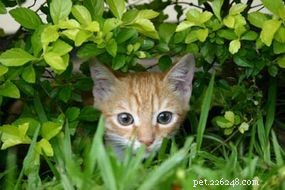
자유로이 돌아다니는 고양이는 다른 고양이와 늦은 밤 큰 소리로 말다툼을 하고, 이웃의 식물을 씹거나 파내고, 지역 새를 죽이고(그러나 지역 설치류 개체수를 통제하는 데 도움이 될 수 있음) 배설물을 다른 사람의 정원에 묻습니다. 일부 사람들과 일부 고양이 주인은 이러한 문제를 사소한 성가심으로 간주하지만 다른 많은 사람들은 이를 훨씬 더 심각한 문제로 봅니다. 고양이가 싸움에 휘말리면 울음소리와 비명 소리 때문에 이웃 사람들을 깨우는 것 이상을 할 수 있습니다. 그의 얼굴이나 등에 보일 수 있는 표면적인 흠집은 그리 나쁘지 않습니다. 그러나 물린 상처가 빨리 아물어 흙과 세균을 봉인하고 며칠 후에 고통스러운 농양을 만들 수도 있습니다. 싸움 중 물린 것도 고양이 면역 결핍 바이러스를 퍼뜨리는 주요 방법인 것 같습니다. 자유롭게 돌아다니는 변경되지 않은 고양이는 또한 애완 동물 과잉 인구에 기여합니다. 이 문제는 동물 보호소를 수용력 이상으로 채우는 문제로 매년 수백만 마리의 개와 고양이가 "잠들게" 됩니다.
완벽한 고양이를 선택했으므로 이제 고양이를 돌보는 방법을 배울 차례입니다. 다음 섹션에서 고양이에게 먹이를 주는 방법을 알려드리겠습니다.

"당신은 당신이 먹는 것"은 당신을 위한 것만큼이나 당신의 고양이에게도 사실인 확고한 상식입니다. 고양이에게 양질의 사료를 먹이면 건강한 고양이를 키울 가능성이 높아집니다.
애완 동물 사료 산업은 큰 사업이며 그만한 이유가 있습니다. 미국 가정에는 1억 마리가 훨씬 넘는 개와 고양이가 살고 있으며 전국에 걸쳐 보호소, 고양이 사육장, 사육장에 더 많이 있습니다. 무엇보다도 수천 명의 사람들이 길 잃은 사람들에게 먹이를 주고 있습니다. 고양이 한 마리가 1년에 약 90파운드 이상의 고양이 사료를 먹을 수 있다고 생각한다면 고양이에게 먹이를 주기 위해 매년 수억 달러를 지출하고 있다는 의미입니다.
사람의 음식과 마찬가지로 고양이에게 좋은 맛있는 고양이 간식과 기본적으로 정크 푸드가 있습니다. 건강에 좋지 않은 음식을 가끔 간식으로 먹는 것이 영구적인 해를 끼치지는 않지만 고양이 식단의 규칙적인 일부가 되어서는 안됩니다.
현대 집고양이의 야생 조상은 사냥꾼이었습니다. 고양이가 여전히 가지고 있는 본능입니다. Tabby가 죽은 새와 생쥐의 선물을 가져오든 보푸라기를 던질 때든, 그녀는 먹이를 추적하고 죽이려는 강력한 타고난 충동을 표현하고 있습니다. 고양이가 타고난 육식 동물(및 육식 동물)인지 의심스럽다면 다음에 하품을 할 때 고양이의 치아를 잘 살펴보십시오. 그 송곳니는 자주개자리 새싹을 먹기 위해 설계되지 않았습니다.
사실 당신의 고양이는 육식 동물이기 때문에 채식주의자로는 살아남을 수 없습니다. 고양이가 필요로 하는 동물성 단백질에서만 발견되는 특정 영양소가 있습니다. 이러한 영양소 중 하나는 타우린이라는 아미노산입니다. 타우린이 없으면 고양이는 실명할 수 있고 심장이 커질 수 있으며, 이는 때가 되기 훨씬 전에 고양이에게 기절할 가능성이 높습니다. 그리고 개와 달리 고양이는 동물 조직에서만 발견되는 아라키돈산이라는 지방산과 비타민 A의 식이 공급원이 필요합니다. 그렇기 때문에 고양이에게 개 사료를 절대 먹이면 안 됩니다. 개 사료에는 고양이에게 적합한 종류의 영양소가 충분하지 않습니다. 파운드 단위로 개 사료를 고양이에게 먹이는 것이 더 저렴할 수 있지만 고양이의 건강, 시력, 심지어 생명까지 위협할 수 있습니다.
물론 그렇다고 해서 고양이에게 날고기를 먹여야 하거나 유일한 먹이원으로 사냥에 의존해야 한다는 의미는 아닙니다. 고양이가 야생에서 생활한 지 수백 년이 지났기 때문에 고양이의 사냥 기술은 녹슬었습니다. 또한 날고기를 사냥하거나 먹는 고양이는 당신에게 전염될 수 있는 질병을 포함하여 여러 종류의 질병에 걸릴 수 있습니다.
그것이 녹색이고 땅에서 자라면 고양이가 그것을 먹으려 할 가능성이 있습니다. 육식성 고양이의 성격에 있는 이 채식주의적 특성은 문제의 식물이 소중한 관엽식물인 경우 특히 걱정스럽습니다. 더 심하게는 고양이에게 유독한 경우입니다.
많은 고양이 주인은 식물 섭취를 행동 문제로 간주합니다. 고양이가 식물을 먹고 있다면 고양이가 원하지 않는 것입니다. 어떤 사람들은 식물을 먹는 고양이가 식단에서 올바른 종류의 음식을 충분히 섭취하지 못한다고 생각합니다. 그들도 옳습니다. 하지만 고양이가 식단에서 더 많이 필요로 하는 것은...식물이라는 의미에서만 그렇습니다.
전문가들은 고양이가 식물을 먹는 이유에 대해 몇 가지 생각합니다. 약간의 미량 영양소를 섭취하거나 소화를 돕거나 구토를 하여 머리카락을 삼키거나 음식이 아닌 물건을 꺼내는 데 도움이 될 수 있습니다. 이유가 무엇이든, 식물을 먹는 것은 고양이의 본능적인 행동입니다. 당신은 그것을 막을 수 없습니다. 따라서 가장 좋은 방법은 두 사람이 함께 살 수 있는 방향으로 행동을 지시하는 것입니다.
"고양이 정원"을 심습니다. 애완 동물 가게와 카탈로그에서 기성품 키트를 찾을 수 있지만 더 경제적인 선택은 직접 하는 것입니다. 손재주가 있다면 나무로 멋진 용기를 만들거나 손에 있는 것을 사용할 수 있습니다. 무엇을 하든지 고양이 정원을 쉽게 기울어지거나 움직이지 않는 용기에 심어야 합니다. 당신이 필요로하는 것은 단지 몇 인치의 좋은 화분 토양과 약간의 씨앗입니다. 귀리 풀이나 개박하가 좋은 선택입니다. "작물"이 나오는 동안 정원을 고양이의 손이 닿지 않는 곳에 두는 것이 좋습니다. 그러나 채소의 높이가 몇 인치가 되면 배치하고 Tabby가 마음대로 먹게 하십시오.
식물을 손이 닿지 않는 곳에 두십시오. 고양이는 매우 뛰어난 등반가와 도약 선수이므로 관엽식물을 스탠드나 선반에 두는 것은 별로 도움이 되지 않을 것입니다. 벽난로, 창턱 등은 고양이 곡예사를 위한 쉬운 착지 패드입니다. 천장에 식물을 걸거나 고양이가 보호할 수 있는 장벽 뒤에 두거나(예를 들어 유리문으로 막힌 일광 베란다 위) 고양이가 절대 뛰어오르거나 기어오르거나 기어갈 수 없는 위치에 둡니다.
식물을 보호하십시오. 식물을 고양이의 손이 닿지 않는 곳에 놓을 수 없다면 식물 주위에 보호막을 형성해 보십시오. 식물 주변의 토양에 닭 철사, 식물 표식기 또는 좀벌레를 놓으면 앞발로 땅을 짚는 것을 방지할 수 있지만 이러한 장벽은 보기에 그다지 아름답지 않습니다. 고양이를 멀리하기 위해 식물 바닥 주위에 스페인 이끼를 추가하십시오. 때때로 잎에 쓴맛을 뿌리면 고양이가 씹는 것을 막을 수 있습니다. 그러나 다른 경우에는 식물에 약간의 맛이 없는 물질을 바르면 고양이의 이빨보다 식물에 더 큰 해를 끼칩니다.
잘 먹인 고양이는 당신보다 더 이상 식사 사이에 간식을 먹을 필요가 없습니다. 간식을 너무 자주 섭취하면 고양이에게 건강에 해로운 체중 증가와 불균형한 식단과 같은 영향을 미칠 수 있습니다.
물론, 때때로 고양이 친구에게 간식을 주고 싶은 유혹을 물리치기는 어렵습니다. 그리고 지금과 그때 사이에 충분한 시간이 걸린다고 가정할 때 그 유혹에 굴복하는 것은 완전히 옳습니다. 시간은 고양이와 고양이에게 주는 간식의 종류에 따라 다릅니다. 고양이가 여전히 매일 권장량의 양질의 사료를 먹고 있고 과체중이 아니라면, 아마도 고양이에게 너무 많은 간식을 주지 않는 것입니다. 반면에 고양이가 맛있지만 영양가는 없는 간식을 씹고 있고 저녁 식사 시간에 배가 고프거나 코를 돌리고 있다면 전략을 바꿔야 할 때입니다.
상점에서 구입한 고양이 간식은 좋은 영양 성분으로 가득 차 있지 않은 경향이 있습니다. 그들의 주요 목적은 인간이 대접하는 것과 같습니다. 좋은 맛을 내는 것, 정말 좋은 것, 그게 전부입니다. "Gourmet" cat snacks usually have fewer artificial colors and fillers in them but still aren't meant to be fed as a regular part of Tabby's diet. The good thing about "gourmet" treats is the cost:They're usually so expensive that cat owners won't overfeed them to their cats!
A question vets hear all the time is, "Can I feed my cat people food?" There's very little that people eat that cats shouldn't (or won't), so that's not really so much of a problem. (Cat owners should be careful about feeding dairy products to their pets. Although cats love dairy products, many don't digest them well and may get sick.) The question once again is nutritional balance. Just like with home cooking, feeding your cat leftovers or using people food for snacks may not be providing her with the right nutrients in the right amounts.
Still, people food might provide some of the healthiest snacks for cats. If you give your cat some scrambled eggs or a couple of pieces of pasta, at least you know what's in it. And you might be surprised what your cat will eat. Cat owners report their pets begging for predictable tidbits such as fish and chicken as well as unexpected ones, including tomatoes and cantaloupe.
Your cat needs about an ounce of water per pound of body weight every day. That doesn't sound like much, but it adds up:An average-size cat would need two quarts of water every week.
Of course, cats get water by drinking. But there's another important source of water for your cat:the food she eats. The more water there is in her food, the less she needs to drink. Canned cat food is more expensive because you're buying water along with the food (up to 75 percent of wet cat food is water) and paying a little more for the container. Dry cat food has much less water (perhaps 10 percent by weight), which means a cat whose diet consists of only dry food has to drink a lot more.
Dehydration (not enough water in the body) is a serious problem for any living creature, and cats are especially prone to it. A cat can go without food for days, losing up to 40 percent of her body weight, and still survive. But a loss of body water of only 10 to 15 percent can kill her. Other liquids -- like milk, if it doesn't make your cat sick -- are a good source of water, but nothing beats the real thing. Be sure your cat has plenty of clean, fresh water available at all times.
We will conclude our examination of cat food with a discussion of store-bought cat food vs. homemade cat foods in the next section.
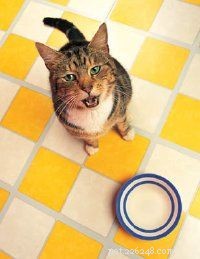
The best thing about a home-cooked meal is you're the one who gets to decide what's in it. If you're a steak-and-potatoes type, then you'll broil up a nice lean Porterhouse and a batch of new reds. On the other hand, if you go for a green salad, you can pick your dinner fresh from the garden. Trying to cut down on cholesterol and salt? When you're the cook, you make the call.
Unless you are a nutritionist or dietitian, however, you should let the experts -- the major pet food manufacturers -- prepare the major portion of kitty's diet. Working out the right amounts and balance of foods is a difficult task. Most food can get lumped into one or more of three categories of nutrition:protein, fat, and carbohydrate. Different kinds of animals (including people) need different proportions of protein, fat, and carbohydrate in their diets. (That's another reason why dog food isn't good for cats -- dogs and cats need different percentages of fat and protein to stay healthy.) What's more, those needs change during an animal's life. A kitten has different nutritional needs than an adult cat, and they both have different needs than an old codger cat. Most pet food companies have special formulas for different levels of age and activity, and there's a whole line of prescription diets for cats with various health problems.
We've all seen a cat come running at the sound of a can opener -- there's no doubt that kitty loves getting canned food. But is canned food better for cats than dry food? Not necessarily. Each type of food has its advantages and disadvantages. The most important factor is whether the food meets your cat's nutritional needs. Of course, your budget and your cat's preference also play a role in which type of food you should choose. Store-bought cat food comes in three general forms:
Each of these types of foods has its strong points and weak points. For instance, dry food is convenient, economical, and can be left out all day. On the other hand, the way some dry foods are formulated seems to encourage the formation of bladder stones. The rich aromas of canned food will tempt even the most finicky eater, but the crunchiness of dry food helps prevent dental plaque. Semimoist combines the convenience of dry food with the tastiness of canned food but may contain the most nonfood fillers and dyes.All brand-name cat food covers the basic nutritional needs of your average cat. But if you're worried about the overall quality of the boxes, bags, and cans of feline food in the pet supplies aisle of your local market, you might want to consider one of the premium-brand foods, usually found only in pet stores or through veterinarians. Feeding your cat store-bought food ensures that she is getting the nutrients she needs. At the same time, a home-cooked supplement to your cat's regular diet is okay if you make sure the foods you select are appropriate for cats. There's nothing wrong with getting the most out of a whole fryer by cooking up the gizzards for the cat, unless they become the major part of Tabby's diet. You see, organ meats (kidney, stomach, and even liver) are all right for your cat in moderation, but they've been linked to health problems if your cat eats too much of them. Likewise, every cat on the planet loves milk and cheese, but most cats have trouble digesting them well.In the next section, we will cover another very important aspect of cat ownership -- grooming.
What's In Cat Food?Careful consumers are label readers -- and that's a good place to start in figuring out just what you're feeding your cat when you buy cat food.Many pet owners compare the nutrition information on different brands of pet food and notice that a less-expensive brand has the same nutrients as a premium cat food. What that really means is that those two foods match up in the laboratory. For example, old shoe leather might rate as high as lean chicken breasts in protein content; of course, you and your cat would both rather eat chicken. So, what you need to know is how the various nutrients match up in your cat.You see, it's not how much of a particular nutrient there is in a can of cat food that matters but how much your cat's digestive system can take up. Cheap foods are usually made from cheap ingredients, which your cat may not digest well. Just because your cat gobbles it up and yowls for more doesn't mean a food is good for her. (Think about kids and junk food.)
The moral of the story is brand-name and specialty pet foods are made by companies that do a lot of research into pet nutrition. They're always improving their foods to keep pace with the latest information, and they use quality ingredients that have nutrients your cat can use. It may cost a little more, but it's worth it.
더 읽어보기
Ever wonder why some cats always look sleek and beautiful and others look like...well, like something the cat dragged in? While it's true that some cats (like some people) are just born with "good hair," a lot of it has to do with grooming. Now, cats are fastidious critters. They tend to take care of themselves pretty well, always licking their fur to keep it clean and in its proper place. But any cat can go from Fluffy to Scruffy without a little help from her human pals.
The magnificent coat of a champion Persian is truly a work of art. But you'd better believe that it took hours of regular grooming to get it -- and keep it -- that way. It's common sense that the more hair there is to take care of, the more work that goes into it. The fluffier the cat's hair, the more likely it is to form mats, too. These thick tangles of hair can be painful and even tear a cat's skin if the mats get bad enough. Mats get embarrassing for a cat, too, since the only way to get rid of really bad ones is to shave them off. Nothing looks more uncomfortable than a cat who has been shaved.
It's not that shorthair cats don't need regular grooming or never get mats -- they do. It's just that their shorter, coarser outer coat requires lower maintenance than a long, silky coat. A shorthair cat who's diligent about her own grooming routine can do a lot to make up for an owner who's a little lazy with the brush and comb. But regular grooming is still a must for both longhair and shorthair cats.
Cats use their tongue and teeth for grooming. Every time Tabby goes into her contortionist bathing routine, she's swallowing hair. The more hair she has (and the more grooming she does), the more hair she swallows. Hair doesn't digest and can clump up in a cat's stomach and intestines to form hairballs. The least dangerous, but still rather unpleasant, side effect of hairballs is your cat coughing them up -- quite often at times or in places you'd much rather she didn't. On a more serious note, a lot of swallowed hair can actually block your cat's intestines, calling for an operation to save her life. The bottom line, as they say in the city, is to invest a few dollars in a brush and comb -- and use them.
Because longhair cats need regular grooming (with daily grooming really being the best), you might want to consult your budget before answering this question. But even if you have the means to bring your longhair cat to a professional groomer weekly, you should still have grooming tools on hand at home -- and know how to use them. You never know when your cat might get into something that needs to be combed out right away or when she might need a touch-up between trips to the groomer.
The main advantages of a professional groomer are training, skill, and experience. A good groomer can get your cat's coat looking spiffy quickly and humanely, with a minimum amount of trauma. Really bad mats and tangles can be dealt with at home, but if you've never done that sort of thing before, you run the risk of injuring your cat -- an injury that will probably need veterinary attention. Such grooming problems are probably best left to the professionals, too.
Even folks who learn to wield a slicker brush and metal comb with a good amount of expertise will turn to a professional groomer from time to time. It could be for a bad mat or tangle, during a particularly heavy period of shedding, or just to get the full treatment so that Tabby looks her best.
Every cat owner needs some grooming supplies. A metal comb is the most essential basic grooming tool. Sturdy stainless-steel combs with wide-set, round teeth are widely available and reasonably priced. A slicker brush has bristles that look like dozens of tiny bent nails. They resemble the rasps on a cat's tongue and serve the same purpose in grooming. Most cats enjoy the sensation of the slicker brush and the metal comb -- unless, of course, you hit a tangle or mat.
You may also want to invest in a flea comb, particularly if you let your cat outdoors, live in a year-round flea climate (like southern Florida or Louisiana), or have other pets who go outdoors. Flea combs look like metal combs but with very fine teeth set close together. Flea combs can be used for regular grooming, as a "touch-up" after the slicker brush or metal comb. Grooming mitts fit over your whole hand and let you work a larger surface while petting your cat.
Here are a few tips for home grooming:
Make it fun. Most cats love being stroked and enjoy the feeling of light grooming. It's good social behavior -- cats who get along well will blissfully groom each other for long periods of time. When it's time to do some grooming, approach your cat in a friendly way, and intersperse the grooming strokes with some regular petting.
Use restraint. It's okay to restrain your cat (gently!) as long as she doesn't start to panic, but be sure to restrain yourself, too. Don't try to force your cat to sit still or stay in an awkward or uncomfortable position for too long. And be careful not to get too exuberant in your grooming strokes. Think about how much you don't like having your hair pulled, then imagine what it's like to have hair getting pulled all over your body.
Know when to quit. You may not be able to groom your cat completely in one session. That's okay. If you get her back and tail, and then she starts to fight you, give up and try finishing in a day or two. It's better to have a half-dozen five-minute grooming sessions spread out over a week and a happy cat than one 25-minute battle and a cat who runs and hides at the sight of the brush.
Get professional help. If your cat has a bad mat or tangle -- or gets something nasty on her fur -- put a call in to your veterinarian or professional groomer. If your cat just doesn't seem to be cooperating with home grooming, schedule an appointment with a professional. While you're there, ask for some tips and a demonstration of basic techniques. Groomers are usually happy to do this for clients; there's nothing more annoying for a groomer than having to constantly shave out and untangle bad mats. The cat suffers, and the groomer is more likely to get bitten or scratched.
Grooming is only part of the story, however. In the next section, we will look at some tips for bathing your cat.
How to Clip Your Cat's NailsYou can invest in specialized cat nail clippers if you'd like, but ordinary human nail clippers will work just as well. Restrain the cat with a gentle football hold. Gently squeeze the cat's toe between your thumb and forefinger, extending the nail. Gently clip off the sharp tip, being careful to stay in the clear portion toward the end of the nail (you should be able to see the reddish "quick" through the nail; don't cut this far or you'll cause discomfort and bleeding). Repeat with each toe.
No cat enjoys having her nails trimmed, but if you start them as kittens it will be easier when they're adults. Also be sure to play with your cat's paws and toes for fun sometimes, too; otherwise she'll always know you're going to cut her nails the minute you take hold of her paw.
더 읽어보기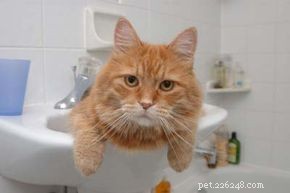
Except for removing a mat or performing a medical procedure, there is almost no other reason to shave a cat's hair. Cats are built to have a full coat of hair -- taking it away can throw off regulation of their body temperature and expose the usually protected skin underneath. Trimming a longhair cat's coat for appearances and to prevent tangles is fine, but it should be done by a professional groomer.
It's usually not necessary to bathe a cat, either, since they do so well keeping themselves clean. Sometimes, though, a bath is called for to treat or control fleas, to clean up an adventurous feline explorer, to treat a skin condition, or to remove a noxious or dangerous mess from your cat's fur. The squeamish, the inexperienced, and the uncertain should probably let a veterinarian or groomer take care of these mandatory baths. For those who want to try it at home, here are several bath basics.
Be prepared. Lay out your bathing supplies ahead of time. You'll need a good pet shampoo (get medicated shampoos for fleas or skin conditions from your vet, not over-the-counter); a large fluffy towel; a brush and comb; and either a handheld shower head or plastic tumbler for wetting and rinsing. It's a good idea to comb out your cat's hair before bathing, if possible, especially for longhairs. If you know how, now is the time to trim your cat's nails. (Note:You can protect your cat's eyes during a bath with a neutral ophthalmic ointment available from your veterinarian.)
Ready your bathing stations. Use a large sink with a dish sprayer attachment or the bathtub. Start the water before you put the cat in, and make sure it's not too hot or too cold. A comfortable temperature for your hands should work fine. You're going to get wet, splattered with suds, and possibly jumped on by an upset, sopping cat, so dress appropriately in clothes that can get soiled yet protect you from scratches.
Before you add the cat. Bathing a cat is often a two-person job -- one to restrain and one to bathe -- but you can do it yourself. Either way, practice restraint techniques on dry land before the bath. With one hand, grasp your cat firmly but gently at the base of the neck or on the scruff, pressing down slightly. See how well you can reach the various parts of your cat's body with the other hand. Figure out when and how you'll have to change grips during the bath. Get your bathing routine down step-by-step before the cat is in the tub or sink; otherwise, Tabby will be able to make a break for it in your moment of hesitation or confusion.
Start the suds. Wet down your cat, starting from the head and working your way to the tail. Apply the shampoo the same way, lather, and rinse thoroughly. (Read the label directions on medicated shampoos carefully. Some require 5 to 15 minutes before rinsing in order to be effective.) Thorough rinsing is important. Leftover soap residue can irritate your cat's skin or be swallowed when your cat licks her fur. Rinsing also gets rid of fleas and other parasites that are immobilized -- but not killed -- by the bath.
Drying a cat. Gently squeeze excess water out of your cat's fur, wrap her up in a large fluffy towel, and dry her off. If she'll stand for it, you can comb out any tangles right away; otherwise, wait until she's dried off and settled down. If you're lucky, your cat may tolerate the sound and feel of a blow dryer. Don't count on it, though -- many cats are terrified by them. This is not something to discover right after a bath. See how your cat reacts to the blow dryer on a non-bath day. If she's scared witless, stick with a towel. You might be able to gradually get her used to the sound and feel (especially if you begin regular baths in kittenhood) -- and then again, you might not!
A large part of keeping your cat healthy is removing potential dangers from your cat's environment. On the next page, we will show you how to cat-proof your home.
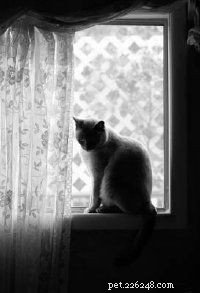
We all know to keep dangerous substances away from children, and it's important to remember that we should be even more careful with cats. We all know the old saying about what curiosity did to the cat. Because they are smaller, more mobile, and have more sensitive noses than children, cats are more likely to investigate, getting into things that can be dangerous. To prevent your cat's curiosity from becoming fatal, there are a few household dangers to look out for.
Drapery, blind, and electrical cords. To your cat's eye, the dangling end of a drapery or blind cord is an open invitation to play -- and possibly to disaster. Even just crawling between drapes or blinds and the window (an all-time favorite feline pastime) can land Tabby in a tangle. Cats who get caught in the loops of pull-cords panic. At the very least, the blinds or drapery rod will come down with a crash. At worst, a cat can strangle, do fatal internal damage, or actually get so worked up that his heart gives out. For maximum safety, tie or wrap all window cords well out of feline reach.
Electrical and telephone cords pose something of a tangling threat but more often are dangerous on account of chewing. It might be the taste or texture of the plastic coating, but for some reason, a lot of cats can't resist nibbling. There's not much direct danger in chewing phone cords (except when you try to make a call on a line that's been put out of commission by your cat) since there's very little current running through them.
Electrical cords are another story altogether, of course. Wherever possible, run the cords under rugs and carpets or behind furniture that sits flush to the floor and wall. If a cord has to be run where a cat can reach it, buy some inexpensive plastic conduit, which is available at most hardware and building supply stores. For a larger investment, you can get flat strips of heavy-duty vinyl that not only protect the electrical cords, but also keep the cords flush to the floor to prevent tripping.
Occasionally, a very determined cat will make his way through all the physical barriers. Treating the cords with a bad-tasting substance like bitter apple might do the trick. A little behavior modification, using positive reinforcement, will help, too.
Cleaning fluids, antifreeze, and other poisons. We don't just buy cleaners to get our house clean; we want it disinfected and smelling nice, too. Unfortunately, some of the very products we buy to sanitize and deodorize pet areas are outright dangerous for your cat.
Pine-based cleaners and those containing phenol (the most popular being Lysol disinfectant) are particularly toxic to cats and shouldn't be used on food bowls or in pet areas, sleeping quarters, or litter boxes. Of course, any cleaning compound can be poisonous if taken internally, so keep everything secured in a locking cabinet. (A simple spring latch won't keep a determinedly curious cat out.)
Ethylene glycol is the stuff that makes antifreeze work. It just so happens that it also smells and tastes very sweet. A significant number of cats and dogs -- and even small children -- suffer from ethylene glycol poisoning every winter. Because it's present in large amounts in almost every home and is often very fatal if swallowed, antifreeze and other products containing ethylene glycol should be considered dangerous and never left where pets or children can get to them.
Cats who go outdoors run the added risk of lapping up antifreeze spills and drips, an especially tempting thing for a thirsty cat to do since those puddles of tasty liquid don't freeze on cold days. You can protect your own cat (and other outdoor cats and strays) by immediately cleaning up and washing down any of your own spills or drips, or you can purchase one of the new nontoxic brands of antifreeze that contain propylene glycol rather than ethylene glycol. It's important to also keep in mind that once your cat leaves your property, there's no guarantee that everyone else in the area is going to be equally careful.
In general, anything that's toxic to you will be poisonous to your cat as well. The rule of thumb is:If you'd keep it out of reach of a child, keep it out of reach of your cat.
Poisonous plants. A cat chewing on your houseplants is more than an annoyance, it can be dangerous or even fatal to the cat.
Technically, any plant that makes your cat sick when eaten is a "poisonous" plant. (Nearly all cats will eat grass or plants to purge themselves, however, so vomiting alone may not be a reliable sign of poisoning.) Still, some plants have particularly serious effects. The list of potentially poisonous plants includes:apricot (pits), azalea, buttercup, caladium, calla lily, castorbean, cherry (twigs, leaves, bark, fruit, and stones), chrysanthemums, crocus, daffodil (bulbs), daphne (berries), holly, hydrangea, iris (leaves, roots, and fleshy parts), ivy, lily of the valley (leaves, flowers, roots), mistletoe (especially the berries), mushrooms, narcissus (bulbs), oak (acorns, young shoots, and leaves), oleander, peach (pits), philodendron, poison ivy, potatoes ("eyes" and sprouts from the eyes; the edible part of the potato is safe), privet, rhubarb (leaves), rosary pea (shiny red and black seeds), star of Bethlehem (bulb), string-of-pearls, sumac, and sweet pea (seeds and pods).
Dieffenbachia is a fairly common houseplant that also goes by the name of "dumb cane." The dumb cane is aptly named. Chewing dieffenbachia can actually paralyze your cat's mouth, making it impossible for him to eat and drink. The name "dumb cane" comes from the most noticeable effect of this paralysis on people:They can't talk.
Poinsettias (Christmas flowers) belong to the nightshade family -- flowers notorious in fact and literature for their deadly properties. A study a few years back seemed to show that poinsettias -- long believed to be dangerously toxic to cats and dogs -- don't make cats any sicker than many plants considered nonpoisonous. Still, it's always safest to keep cats away from any houseplant, just to be sure.
Windows, balconies, and screens. "High-rise syndrome" might sound like some sort of pop psychology explanation for violent crime, but it actually describes an epidemic that hits a number of cats every year, especially in warmer weather. "High-rise syndrome" is a collection of various injuries that are the result of a fall from a high window.
Amazingly, there are many stories of cats surviving falls from several flights up. But there are far more who fell and didn't make it. The saddest part of it is nearly all of those falls could have been prevented.
Every window that you plan to open needs to have a screen. And not just any screen. A cat-proof screen has to fit the window frame securely enough to stay firmly in place when confronted by ten or more pounds of cat. When ordering or replacing screens, use a heavy-duty grade of hardware cloth since ordinary screens can be easily torn by claws or teeth. Even a fall from a second- or third-story window can cause serious injury or death, so inspect all screens regularly, especially toward the end of winter in cold-weather areas of the country. Screens can warp, tear, or fatigue in the off-season.
Some city cat owners think letting Tabby out on the balcony of their apartment is a safe way to give him some fresh air and sunshine. Actually, a good number of "high-rise syndrome" cats were stalking moths, birds, or other irresistible things on an upper-floor balcony, when an ill-timed pounce or missed step sent them over the railing. Even a leash or tether on an open balcony doesn't ensure your cat's safety. A panicked cat dangling by his collar or harness can be strangled, seriously injured, or squirm loose and fall anyway.
Though you buy toys to amuse your cat, the wrong toy can be dangerous. In the next section, we will teach you what toys are safe for your cat.
The Animal Poison Control Hotline"My cat is a chowhound -- she never misses a meal," one cat owner recalls. "So when she didn't come running at dinnertime, I knew something was very wrong. I found her under the bed, and when I coaxed her out, she was staggering and drooling. I was terrified. She had this funny smell, which I recognized as the cleaning fluid I kept in my linen closet. I ran to the closet, and I found the door open and the can of cleaning fluid spilled on the floor.
"The problem is, we live a good 30 minutes from the nearest veterinarian. I didn't know how long she had been poisoned, and I wasn't sure that she had another half hour to spare. Then I remembered about the hotline -- and it saved my cat's life."
The ASPCA National Animal Poison Control Center (also called the Animal Poison Hotline) is operated by the University of Illinois College of Veterinary Medicine. Call 1 (888) 426-4435. There's a $55 flat fee, chargeable to a credit card (have your charge card ready). For more information, contact ASPCA Animal Poison Control Center (1717 South Philo Rd., Suite 36, Urbana, Illinois 61802).
더 읽어보기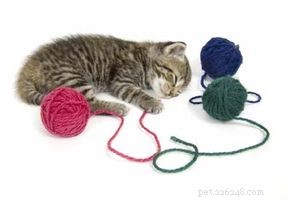
It's like something right out of a Norman Rockwell painting:a fuzzy little kitten tumbling around with a ball of yarn. Well, old Norman apparently never had to rush his cat to the vet for emergency surgery to get a couple of feet of that yarn unraveled from the poor cat's digestive tract. Yarn and string can turn even the most disinterested cats wide-eyed and playful but should never be left where cats or kittens can get at it on their own. Besides choking and intestinal blockage dangers, a cat who gets tangled up in string or yarn -- even during supervised play -- can panic and injure himself, possibly fatally. Take special care to keep sewing thread and dental floss out of feline reach; it's much finer and can become imbedded in the tissues of your cat's mouth, stomach, and intestines.
Cats will turn anything shiny, crinkly, or small enough to bat across the floor into a toy. Since Tabby doesn't have hands, he has to pick up these makeshift toys in his mouth, where they can be easily swallowed (or if not easily swallowed, can cause choking). At best, a foreign object in your cat's digestive system can trigger vomiting or diarrhea, but it can often be much worse. Keep things like paper clips, foil, and rubber bands safely tucked away.
Cellophane candy wrappers are particularly dangerous. Cats can't resist the crinkly texture, and the sugary residue makes them a cinch to get eaten. The wrappers can liquefy in your cat's stomach, coating the lining and blocking the uptake of nutrients from food.
What makes for a safe cat toy? Here's what to look for:
Something sturdy. If it can get tossed, thrown, gnawed, clawed, batted, kicked, licked, and repeatedly pounced on without coming apart, it's a good cat toy. Catnip-filled toys encourage play, but most cats like to eat catnip and will try to lick and chew their way to that scrumptious herbal filling. Catnip toys made from light fabric or felt will most likely be in shreds--and the shreds in your cat's tummy -- within a week. Ditto for plastic or vinyl toys that can be chewed up, cracked, or shattered.
No (re)movable parts. Catnip mice with yarn tails; crinkly cater- pillars with bug eyes; oversized plush "bumblebees" with glued-on felt features, and plastic mesh balls with tantalizing little bells inside are four of the more popular cat toys. But they share a common failing:small and potentially dangerous parts that come off. If you can pull or peel a part or decoration off a cat toy, the odds are your cat can, too. In fact, go ahead and try it with all your cat's toys -- it's better to have some catnip mice without tails than make a trip to the vet to get the tails out of your cat's stomach.
Something fun. A toy just isn't a toy if your cat won't play with it. Cat owners are often disappointed--and frequently annoyed -- to find that the $100 worth of custom cat toys they bring home get passed over for a piece of crumpled paper or a simple table tennis ball. Cats like games that involve what they do best:climbing, running, leaping, stalking, and pouncing. Pick toys that encourage those behaviors, and your cat is bound to use them. That's the allure of the table tennis ball -- it rolls and hops and skitters away when your cat pounces on it, encouraging batting and chasing. Cats see moving edges better than stationary objects, so toys that wiggle, bob, or weave fascinate them and trigger the stalking and hunting reflexes.
In our final section, we will cover perhaps the most important part of caring for you pet -- finding a good veterinarian. Finding a good vet for your cat is just as important as finding a good doctor for yourself.
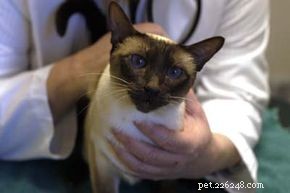
Choosing a veterinarian for your cat is a lot like choosing a doctor for yourself. You want someone with a good bedside manner and someone you like and trust. If you have special needs, you also want a doctor who understands and keeps those needs in mind.
If you're a first-time cat owner, have recently moved to a new area, or need to find a new veterinarian, you can just try opening the Yellow Pages to "Animal Hospitals." All veterinarians go to school as many years as medical doctors and have to meet strict standards for licensing, so you're bound to find a competent and professional vet that way. But the relationship among you, your pet, and your vet is going to last for many years, and if you took the time to find just the right cat, it makes sense to find the right vet. This might be the one area where city folk have it over country folk. A small town may just have one vet, while a big city has dozens within several miles.
Besides the Yellow Pages, here are some other sources for finding a good veterinarian:
Contact professional organizations. The American Veterinary Medical Association (www.avma.org) can refer you to affiliated veterinarians in your area, and the American Animal Hospital Association (www.aahanet.org) can direct you to clinics that meet its standards. The AVMA can also help you find feline specialists, behavior experts, veterinary eye doctors, and other professionals. Like any specialist, though, expect to pay heftier fees.
Get recommendations from other "cat people." Friends, family, and neighbors who have cats usually also have veterinarians. Take advantage of their experience, and get recommendations from them.
Once you get a referral for a veterinarian, call up, introduce yourself, and find out when you can drop by to see the facilities and meet the doctors. Make your visit brief but thorough. Be discriminating, but don't be put off if the vet and the clinic staff can't spend a long time with you -- they do have a hospital to run and patients to take care of. If you have a lot of questions and need the vet's undivided attention, the most polite thing to do is make an appointment -- and offer to pay for it.
If you are going to drop by the facility and meet with the vet, here are some items to consider:
Feline Vaccinations What exactly are vaccinations, and how do they help keep cats healthy? Here's how most vaccines work. Researchers find the germ causing the disease--for example, the virus that causes feline distemper. Next they produce a harmless, noncontagious version of the virus. This form of the virus is used to vaccinate healthy cats. The vaccine triggers the cat's disease-fighting immune system, which attacks and destroys the virus. This exposure "primes" the immune system so that if the same virus shows up again -- even the dangerous, contagious version -- it will be destroyed before it can cause illness.Vaccines protect your cat from common diseases, mostly caused by viruses. When a virus invades an animal's body, no medicine can kill it. You can give a cat with a virus things like antibiotics from now until doomsday, and it won't cure the disease (although the antibiotics will help treat or control infections that might start as a result of the cat's being sick with the virus). Viral diseases just have to run their course, after which the victim is often immune for life. Vaccines (usually with regular booster shots) provide your cat with the benefits of being immune without actually having to suffer through the disease.
Vaccines can't cure diseases caused by viruses. Going back to feline distemper for a moment, if a cat has already contracted this disease, the vaccine won't stop it. Vaccines also can't prevent every viral disease every time. No vaccine is 100 percent effective, so every once in awhile a cat who has all his shots will still get sick with something he's supposed to be protected against. Some diseases, like FIV, are caused by viruses that shut down the immune system when they first enter the cat's body. In those cases, the vaccine can't do its job because its tools (the disease-fighting system of the cat's body) have been taken away.
Get your cat's shots from a veterinarian or animal hospital. At the bare minimum, cats should be up-to-date on their rabies shot and distemper-combination vaccine. The combination shot usually carries protection against feline distemper (panleukopenia) and common upper respiratory diseases that cause cold- or flu-like symptoms in your cat (feline viral rhinotracheitis, calicivirus, and chlamydia). Vaccines may be given as an injection under the skin or in the muscle or as an aerosol administered directly into the cat's nostrils.
Any cat being vaccinated for the first time usually needs a series of shots, spaced several weeks apart. For kittens, these shots start at seven or eight weeks of age and continue until they are four months old. Rabies vaccines are given as one shot administered initially to a kitten over three months of age and to adults of any age. The American Association of Feline Practitioners recommends that subsequent boosters for many diseases (depending on the type of vaccine used) be given a year from the initial series and then every three years thereafter. Check with your veterinarian for vaccine scheduling recommendations for your cat.
Vaccines for other cat diseases have been around since the mid-1980s, particularly the one for feline leukemia virus (FeLV). FeLV (or FeLeuk, as it's sometimes known) attacks a cat's white blood cells and can produce a kind of cancer. Research shows that most cats exposed to FeLV don't get sick, but even infected cats who appear healthy can still pass the virus on to other cats. Once a cat does get sick from FeLV, though, the odds of recovery are poor.
The FeLV is a funny creature -- it doesn't last long outside of a cat's body, unless it stays a little moist. So the most common way FeLV gets passed is prolonged close contact between a healthy cat and infected cat -- things like mutual grooming, or sharing food, water, or litter boxes. This also means that the FeLV vaccine may not be necessary for a cat that is never exposed to FeLV-infected cats. A simple blood test can determine if your cat (or any new cat you're thinking of taking into your home) is infected. If not, keeping your FeLV-free cats indoors and away from FeLV-infected cats is probably all the protection they need (outdoor or indoor/outdoor cats are a different story). If your cat tests positive for FeLV, the vaccine won't help, either; vaccines don't kill the virus, they only protect uninfected cats from getting it.
Feline immunodeficiency virus (FIV) and feline infectious peritonitis (FIP) are also fatal cat diseases caused by viruses. There are laboratory tests for their detection, but the test used currently for FIP can give inconclusive results. Vaccines exist for FIV and FIP, but the jury is still out on their effectiveness in preventing disease transmission. Your veterinarian can help you figure out if your cat is at risk for these diseases and if the potential benefits of each vaccine outweigh the risks.
While you will face many challenges as a pet owner, you now know the basic care tips that every cat needs to be happy and healthy.
Publications International, Ltd.

고양이에게 주사기 먹이는 방법 새끼 고양이와 고양이는 여러 가지 이유로 식사 습관이 지연될 수 있습니다. 때로는 나이 때문이고, 나이든 고양이의 경우 수술이나 질병 때문일 수 있습니다. 그렇다고 해서 고양이가 스스로 먹을 수 있을 때까지 굶어야 한다는 의미는 아닙니다. 당신이 할 수 있는 일은 그녀에게 주사기로 먹이를 주거나 영양이 잘 공급되도록 보조 먹이를 주는 것입니다. 이것은 하루에 몇 차례 주사기를 통해 수의사가 권장하는 평소 습식 사료나 처방된 사료를 고양이에게 먹이면 됩니다. 고양이에게 주사기 먹이가 필요한 경우는
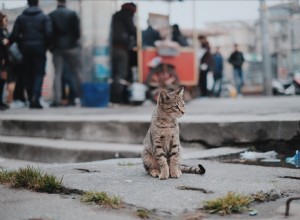
5주 된 새끼 고양이에 대해 알아야 할 모든 것 제 블로그를 보신 적이 있다면 제가 최근에 고아 고양이를 구출하고 양육했다는 것을 아실 것입니다. 우리는 약 3주 동안 그녀를 얻었고 그 과정에서 큰 깨달음을 얻은 것으로 추정합니다. 나는 새로운 새끼 고양이의 삶의 다른 주마다 내가 수집한 정보를 통해 당신을 안내하고 싶었습니다. 당신이 처음부터 시작했다면 그들은 우리가 먼 길을 왔다는 것을 알고 있습니다. 새끼 고양이 발달 기술은 2주 된 새끼 고양이에서 이제 5주 된 새끼 고양이로 성장했습니다. 친구들은 조심하세요!